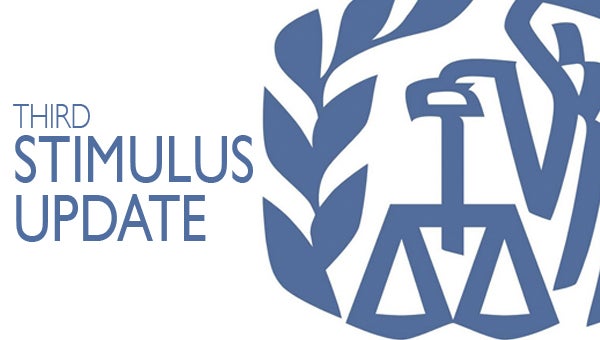IRS provides details and way to track stimulus payments
Published 5:23 pm Monday, March 15, 2021
WASHINGTON — While some may have received their third round of Economic Impact Payments — or stimulus checks — over the weekend, many Americans will receive their payments over the coming days, the Internal Revenue Service said.
Following approval of the American Rescue Plan Act, the first batch of payments will be sent by direct deposit.
Additional batches of payments will be sent in the coming weeks by direct deposit and through the mail as a check or debit card. The vast majority of these payments will be by direct deposit.
According to the IRS, no action is needed by most taxpayers; the payments will be automatic and, in many cases, similar to how people received the first and second round of Economic Impact Payments in 2020. People can check the Get My Payment tool on IRS.gov to see the payment status of the third stimulus payment.
“Even though the tax season is in full swing, IRS employees again worked around the clock to quickly deliver help to millions of Americans struggling to cope with this historic pandemic,” IRS Commissioner Chuck Rettig said. “The payments will be delivered automatically to taxpayers even as the IRS continues delivering regular tax refunds. We urge people to visit IRS.gov for the latest details on the stimulus payments, other new tax law provisions and tax season updates.”
Highlights of the third round of payments; IRS will automatically calculate amounts
In general, most people will get $1,400 for themselves and $1,400 for each of their qualifying dependents claimed on their tax return. As with the first two Economic Impact Payments in 2020, most Americans will receive their money without having to take any action. Some Americans may see the direct deposit payments as pending or as provisional payments in their accounts before the official payment date of March 17.
Because these payments are automatic for most eligible people, contacting either financial institutions or the IRS on payment timing will not speed up their arrival. Social Security and other federal beneficiaries will generally receive this third payment the same way as their regular benefits.
The third round of Economic Impact Payments (EIP3) will be based on the taxpayer’s latest processed tax return from either 2020 or 2019. This includes anyone who successfully registered online at IRS.gov using the agency’s Non-Filers tool last year, or alternatively, submitted a special simplified tax return to the IRS. If the IRS has received and processed a taxpayer’s 2020 return, the agency will instead make the calculation based on that return.
In addition, the IRS will automatically send payments to people who did not file a return but receive Social Security retirement, survivor or disability benefits (SSDI), Railroad Retirement benefits, Supplemental Security Income (SSI) or Veterans Affairs benefits. This is similar to the first and second rounds of Economic Impact Payments, often referred to as EIP1 and EIP2.
For those who received EIP1 or EIP2 but don’t receive a payment via direct deposit, they will generally receive a check or, in some instances, a prepaid debit card (referred to as an “EIP Card). A payment will not be added to an existing EIP card mailed for the first or second round of stimulus payments.
Under the new law, an EIP3 cannot be offset to pay various past-due federal debts or back taxes.
The IRS reminds taxpayers that the income levels in this new round of stimulus payments have changed. This means some people won’t be eligible for the third payment even if they received a first or second Economic Impact Payment or claimed a 2020 Recovery Rebate Credit. Payments will begin to be reduced for individuals making $75,000 or above in Adjusted Gross Income ($150,000 for married filing jointly.) The reduced payments end at $80,000 for individuals ($160,000); people above these levels are ineligible for a payment.
New payments differ from earlier Economic Impact Payments
The third round of stimulus payments, those authorized by the 2021 American Rescue Plan Act, differs from the earlier payments in several respects:
- The third stimulus payment will be larger for most people. Most families will get $1,400 per person, including all dependents claimed on their tax return. Typically, this means a single person with no dependents will get $1,400, while a family of four (married couple with two dependents) will get $5,600.
- Unlike the first two payments, the third stimulus payment is not restricted to children under 17. Eligible families will get a payment based on all of their qualifying dependents claimed on their return, including older relatives like college students, adults with disabilities, parents and grandparents.







